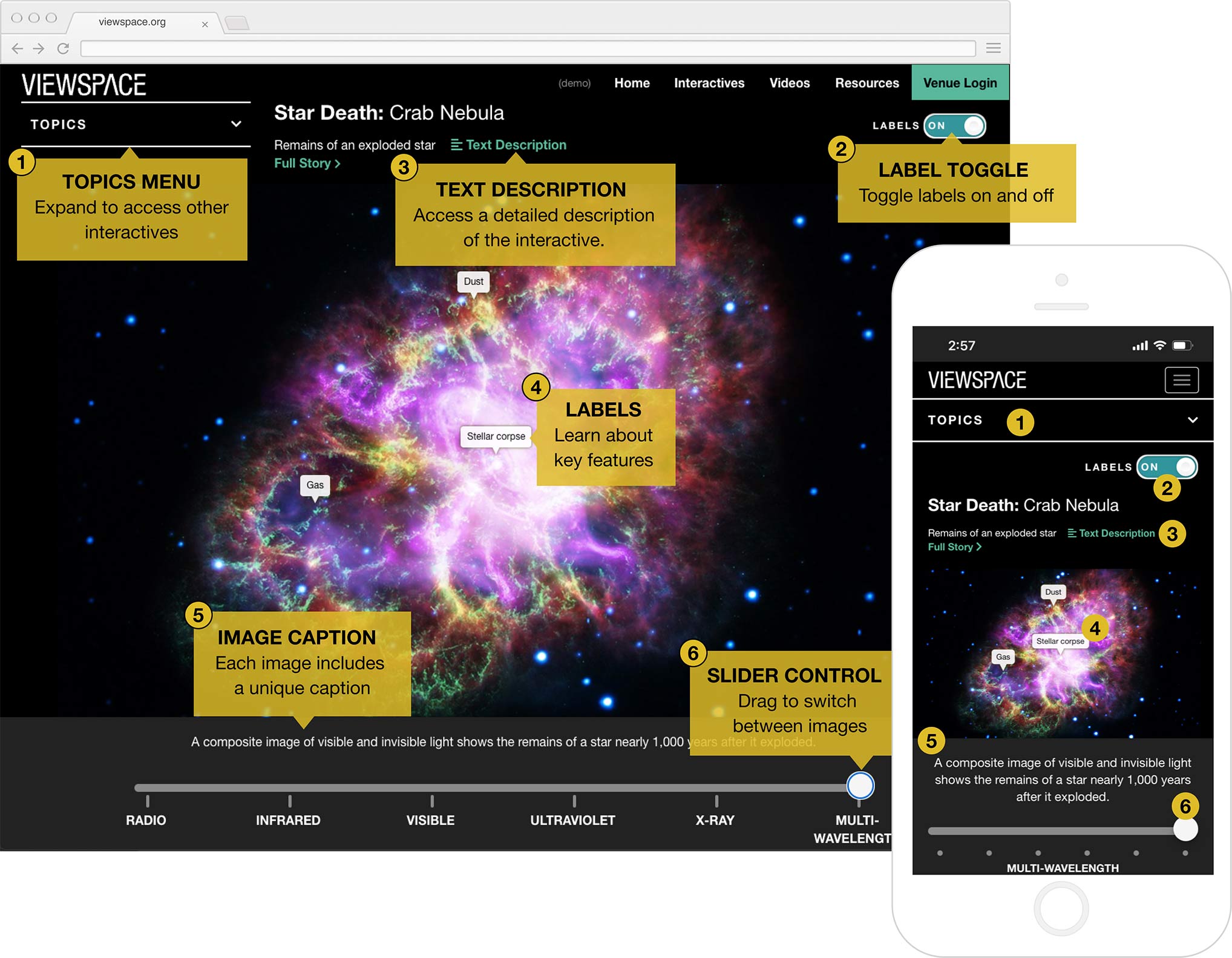Expand Your Universe with ViewSpace Interactives
ViewSpace Interactives allow you to explore objects and materials from different perspectives, and discover how we can combine information to better understand the universe.
- Spy newly forming stars hidden inside giant clouds of gas and dust
- Search for a pulsar in the remains of an exploded star
- Witness the effects of galaxy collisions
- Explore ways of detecting and investigating planets orbiting distant stars

Start Exploring
Select a topic below to access our interactive sliders. Each topic includes a number of sliders, which are accessible by expanding the topic within the Topics Menu (shown above), and then clicking on the slider title.
If you are here for the first time, begin by exploring what the world might look like if human eyes could detect all different Forms of Light.
Museums, libraries, and other informal learning venues may want to consider installing our ViewSpace Interactives App, which provides isolated access to the interactives without the ability to easily navigate away to other websites.
Unveiling The Invisible Universe is adapted from Cool Cosmos by Caltech/IPAC with additional contributions from Bruno Merin and Miguel Merin (Pludo).